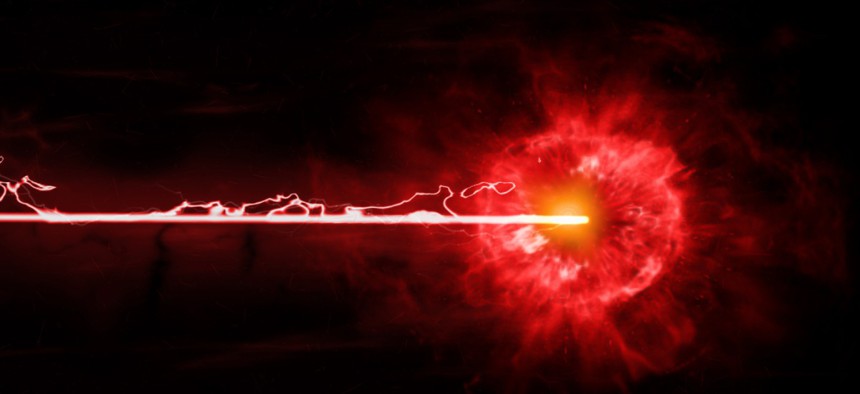Air Force to Build New Center to Study and Enhance Directed Energy Capabilities

janiecbros/istockphoto
Experts expect the technology to play a major role in some future weapon systems.
The Air Force Research Laboratory confirmed plans to open up a new center for strategic studies into directed energy—like lasers and high-power electromagnetics applied to take out a specific target—in collaboration with the University of New Mexico.
Expected to go into full operation by 2025, the new hub will enable researchers to study and develop next-generation capabilities in that increasingly competitive technological realm.
“In August of this year, the Air Force released the Directed Energy Futures 2060 report that defines visions for directed energy and some aspects of electronic warfare with respect to technology development, military utility and proliferation,” AFRL Tech Engagement Office Director Matt Fetrow told Nextgov on Monday.
That report warns that the U.S. is now “moving aggressively to retain” leadership in directed energy, which it describes as a focused beam of electromagnetic energy that can be used by to disrupt or harm humans, devices, missiles, vehicles and other targets. Officials promoting its use argue that this technology is less costly than traditional kinetic systems and can result in less collateral damage. The Defense Department has tracked at least 31 actors using directed energy weapons in missions to counter drones, as well as multiple state and non-state actors who have used lasers during protests, and for policing and other purposes.
“We maintain that we are approaching or have passed a tipping point for the criticality of directed energy capabilities as applied to the successful execution of military operations for the United States, allies, and for the United States’ rivals and potential adversaries,” officials wrote in the report.
News of the to-be-launched center also comes as the U.S. government is investigating a mystery illness—coined Havana Syndrome—that has recently plagued a number of federal officials and diplomats with dizziness, debilitating headaches and other detrimental symptoms. Those involved are reportedly confident that directed energy played a role.
Defense Department press officials did not say whether AFRL’s new directed energy center would be used to study the impacts of this emerging technology on Americans, such as those suffering from Havana Syndrome. Still, they noted that the department is actively involved in the ongoing, governmentwide investigation into the sickness.
The facility on UNM’s campus that will house this hub meant to accelerate U.S. expertise in high-power, fiber laser research does not yet exist, but it is in early planning stages. It’s underpinned by a $2.4 million, four-year cooperative agreement through AFRL.
“One of the goals of the DE Center is workforce development, to train the next generation of scientists and engineers to contribute to directed energy at AFRL and to local supporting industry,” UNM Distinguished Professor Dr. Edl Schamiloglu, who is set to lead the center, told Nextgov. “Directed Energy is an important component of economic development in Albuquerque and New Mexico.”
UNM has engaged with the military lab on directed energy microwaves for more than 30 years.
“The establishment of this center formalizes these interactions and ramps up the directed energy laser side of the program at UNM,” Schamiloglu said.






